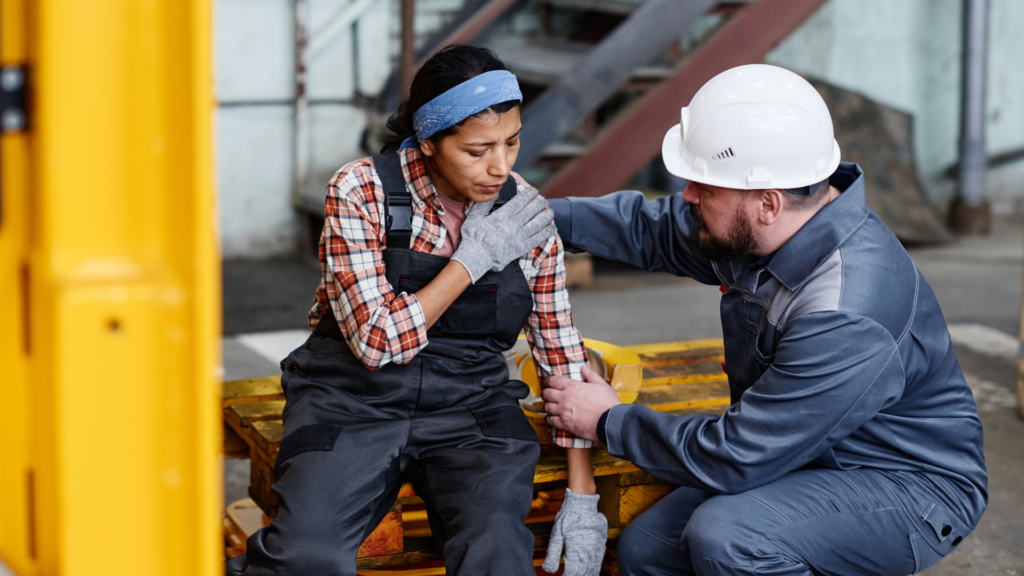Workplace safety isn’t just about avoiding fines or complying with regulations; it’s about protecting an organization’s most valuable asset: its people. While OSHA (Occupational Safety and Health Administration) has made significant strides in improving workplace safety since its inception in 1970, injuries, illnesses, and fatalities still occur at an alarming rate.
Management Commitment to Workplace Safety
Management commitment is crucial for creating a workplace where safety is a core value, not just a box to be checked. Effective leadership in safety involves:
- Leading by Example: Demonstrate a personal commitment to safety through actions and communication.
- Setting Clear Goals: Establish specific, measurable, achievable, relevant, and time-bound (SMART) goals for the safety program.
- Providing Resources: Allocate the necessary resources, including budget, personnel, and equipment, to support the safety program.
- Encouraging Performance: Recognize and reward safe behaviors, provide constructive feedback, and foster a positive safety culture.
Worker Participation in Safety Programs
Workers are the eyes and ears of any safety program. Their participation and buy-in are essential for identifying hazards, developing solutions, and creating a sense of ownership in the safety process.
Key Aspects of Worker Participation:
- Empowerment: Encourage workers to actively participate in safety initiatives and provide them with necessary resources and support.
- Open Communication: Establish clear channels for reporting safety concerns, including anonymous reporting options.
- Information Access: Provide workers with easy access to safety data sheets (SDSs), job hazard analyses (JHAs), and incident reports.
- Involvement: Involve workers in all aspects of the safety program, from hazard identification to program evaluation.
Hazard Identification and Assessment
A thorough understanding of workplace hazards is the foundation of any effective safety program. Hazard identification and assessment involve:
- Data Collection: Gather existing safety data, including equipment manuals, SDSs, incident reports, and worker feedback.
- Regular Inspections: Conduct frequent inspections to identify hazards related to equipment, electricity, fire, housekeeping, and ergonomics.
- Job Hazard Analysis (JHA): Analyze specific tasks to identify potential hazards associated with each step.
- Incident Investigation: Investigate incidents, including near misses, to understand root causes and prevent recurrence.
- Hazard Prioritization: Categorize hazards based on severity and likelihood to prioritize control efforts.
The Hierarchy of Controls
The Hierarchy of Controls is a framework for selecting the most effective hazard control methods. It prioritizes controls from most effective to least effective:
- Elimination: Remove the hazard completely.
- Substitution: Replace the hazard with a less hazardous alternative.
- Engineering Controls: Isolate the hazard through physical changes to the workplace.
- Administrative Controls: Change work practices and procedures to reduce exposure to hazards.
- Personal Protective Equipment (PPE): Provide PPE as a last line of defense when other controls are not feasible or fully effective.
When selecting hazard controls, consider OSHA standards, industry best practices, and worker feedback. Develop a comprehensive Hazard Control Plan that outlines specific control measures, implementation timelines, and evaluation criteria.
Safety Education and Training
Education and training are essential for ensuring that everyone understands their role in the safety program and has the knowledge and skills to work safely.
Key Training Components:
- General Awareness: Provide all employees with an overview of the safety program, policies, procedures, and worker rights.
- Management and Supervisor Training: Equip managers and supervisors with the skills to lead and support safety initiatives.
- Worker-Specific Training: Provide training tailored to specific job roles and hazards.
- Regular Refresher Training: Conduct regular refresher training to reinforce safe work practices and update knowledge.
Continuous Improvement in I2P2
An effective Injury and Illness Prevention Program (I2P2) is a dynamic process that requires continuous evaluation and improvement. This involves:
- Monitoring: Establish a system for tracking safety performance using both leading and lagging indicators.
- Evaluation: Regularly evaluate the program’s effectiveness against established goals and targets.
- Feedback: Collect feedback from workers to identify areas for improvement.
- Adaptation: Update the program to address new challenges, technologies, and feedback.
Injury and Illness Prevention Programs (I2P2) are a proactive approach to workplace safety that goes beyond simply reacting to incidents. By implementing the key elements of an effective I2P2, including management leadership, worker participation, hazard identification and assessment, hazard prevention and control, education and training, and program evaluation and improvement, you can create a safety culture where everyone thrives.
Expand Your Knowledge
Expand your knowledge with our Workplace Safety: Injury and Illness Prevention Training Course. For a deeper dive into specific regulations and industry best practices, consider enrolling in our specialized Safety Management Certification Program.
References
Occupational Safety and Health Administration (OSHA) – Injury and Illness Prevention Programs
National Institute for Occupational Safety and Health (NIOSH) – Hierarchy of Controls
Occupational Safety and Health Administration (OSHA) – Workers’ Rights



